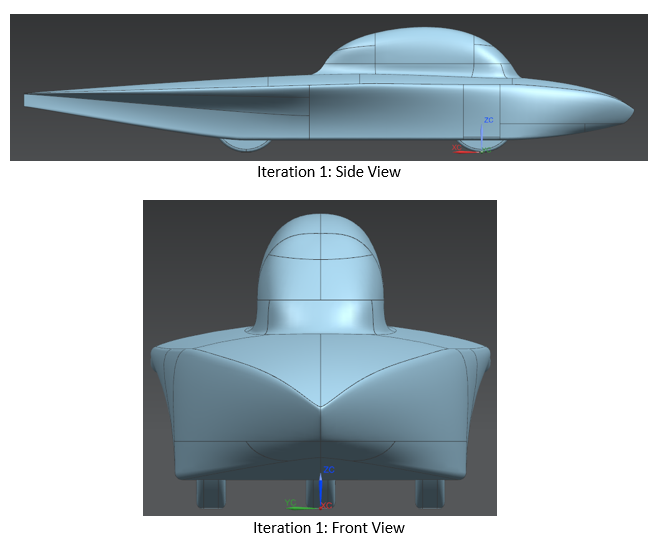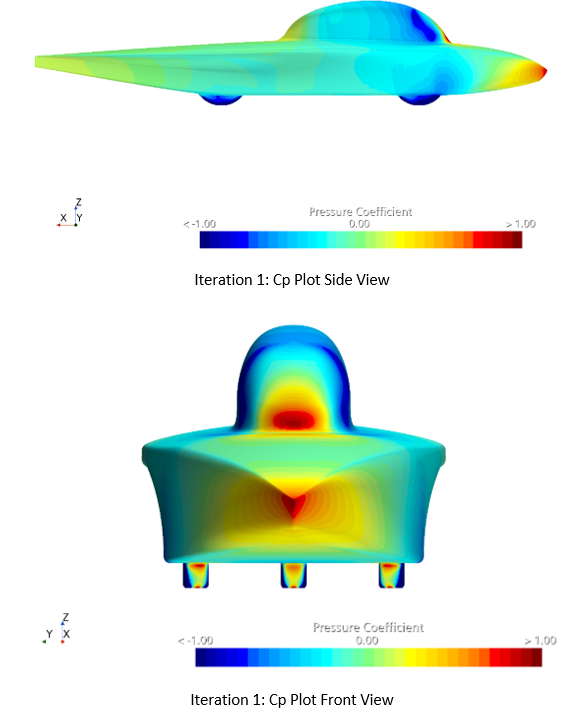Fourth-year undergraduate student pursuing two B.S in Mechanical Engineering and Aerospace Engineering.
Solar Car Canopy optimization
Improving the aerodynamic performance by optimizing the car's canopy.
I am in charge of optimizing the canopy of the 3-Wheel Mono-Car that will be competing at the Bridgestone World Solar Challenge race in Australia, during the Fall of 2023.
Task done so far:
I designed the canopy in Siemens NX, ran CFD simulations on StarCCM+, and analyzed the pressure distribution around the body. The goal after every iteration is to reduce the CdA coefficient (drag coefficient times frontal area).
Currently:
The design space for the car has been changed. The Mechanical Engineering subdivision moved the driver's position forward and implemented a roll cage around the driver. My task is now to design and optimize the canopy based on the new position and cage implementation.

Iteration 1: First proposal of canopy design

Iteration 2: Second proposal of canopy design

Iteration 3: Third proposal of canopy design

Iteration 1: First proposal of canopy design
Siemens NX Canopy Designs
Three designs of the canopy.
Each design incorporated improvements that allowed better aerodynamic performance by decreasing the CdA coefficient.
STARCCM+ Simulation
Wind Tunnel simulation
Set up:
Wind tunnel simulation setup.
Repairing the surface from any design errors.
Defining the volume of the car:
Pegs
Front Wheels
Rear Wheel
Canopy
Setting boundary conditions on the control volume.
Wind tunnel inlet
Wind tunnel outlet
Walls


Iteration 1: Pressure distribution around the body.

Iteration 2: Pressure distribution around the body.

Iteration 3: Pressure distribution around the body.

Iteration 1: Pressure distribution around the body.
Results
Analysis of pressure and drag around the body
The pressure distribution after the simulations show that the pressure concentration decreased on the front of the canopy.
The most important criterion is the CdA coefficient (Drag coefficient multiplied by the frontal area of the car).
After each iteration, the CdA decreased:
Iteration 1 CdA: 0.0731
Iteration 2 CdA: 0.0702
Iteration 3 CdA: 0.0699

Iteration 1: Canopy design on the new design space.

Iteration 1: Pressure distribution around the body.

Iteration 1: Canopy design on the new design space.
Current work
Canopy optimization in the new design space.
The first iteration of the canopy on the new design space is shown in the pictures.
There are favorable results with the first iteration:
CdA: 0.0690
Further improvements include lowering the canopy so that the clearance between the roll cage and the inner canopy surface is lowered and hence the frontal area is decreased.
Also, there is a significant pressure concentration on the front of the canopy that must be lowered.

